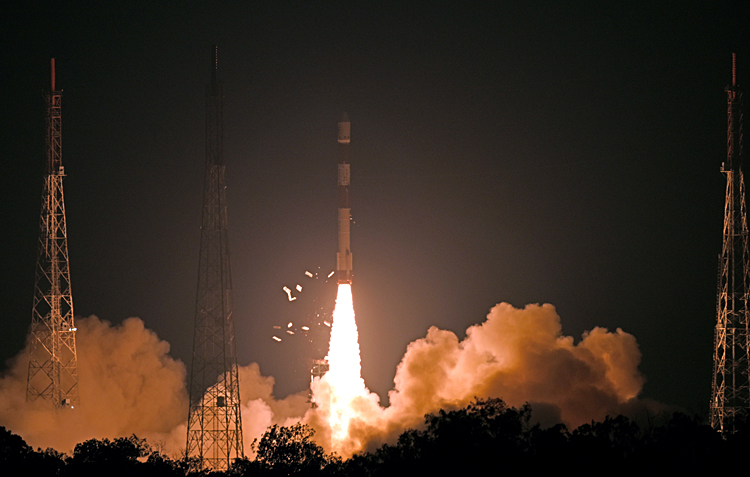INDIAN ARMED FORCES CHIEFS ON OUR RELENTLESS AND FOCUSED PUBLISHING EFFORTS

The insightful articles, inspiring narrations and analytical perspectives presented by the Editorial Team, establish an alluring connect with the reader. My compliments and best wishes to SP Guide Publications.

"Over the past 60 years, the growth of SP Guide Publications has mirrored the rising stature of Indian Navy. Its well-researched and informative magazines on Defence and Aerospace sector have served to shape an educated opinion of our military personnel, policy makers and the public alike. I wish SP's Publication team continued success, fair winds and following seas in all future endeavour!"

Since, its inception in 1964, SP Guide Publications has consistently demonstrated commitment to high-quality journalism in the aerospace and defence sectors, earning a well-deserved reputation as Asia's largest media house in this domain. I wish SP Guide Publications continued success in its pursuit of excellence.
New Eye in the Sky
 |
The Author is Former Director General of Information Systems and A Special Forces Veteran, Indian Army |

On May 22 May 22, 2019, ISRO achieved another feather in its cap by successfully launching RISAT – 2B; microwave radar imaging earth observation satellite. The mission carried a complex 3.6 metre unfurlable radial antenna, and also tested a new low-cost light 'Vikram' processor developed at the Semiconductor Complex, Chandigarh, which will control future ISRO launch vehicles. Weighing 615 kilograms, RISAT-2B took off at 5.30 am on the PSLV-C 46 launcher. About 15 minutes later, it reached its orbit at 557 km above ground and commenced orbiting in the planned position in space, with an inclination of 37 degrees. Developed on fast track basis in 15 months at the UR Rao Satellite Centre (URSC) in Bengaluru, RISAT – 2B is built to work for at least five years. It will enhance India's space based all-weather capabilities, with the data from it assisting the Armed Forces, disaster management, agriculture forecasting and forestry. Its X-band synthetic aperture radar gives added details like size of objects on Earth, structures, movement and change. Such information will complement data from the normal optical remote-sensing satellites. This data is crucial for agencies that need ground imageries since it will be now available during cloud, rain and in hours of darkness.
The synthetic aperture radar is very much like flashlight of a camera, which releases visible light to illuminate the object and then uses the reflected light to create an image. The synthetic aperture radar sends out hundreds of radio signals every second towards the subject (earth in this case) and captures the reflected signals to create a radio image, which can then be used by computers to build a real image. Because the very large wavelength radio waves are not obstructed by clouds, dust or similar other obstacles in the atmosphere, they produce reliable images during day and night and all seasons.
In his post launch address, K. Sivan, ISRO chief called RISAT-2B a very important and complex satellite and added that ISRO had included two important secondary or piggyback trial payloads that would revolutionalise ISRO's future missions; his reference being to the complex 3.6 metre unfurlable radial antenna and the low-cost light 'Vikram' processor. RISAT – 2B is the third Indian RISAT in 10 years, coming up after the Israeli-built RISAT-2 in 2009 and later ISRO-built RISAT-1 in 2012. The older two have reached the end of their lives. ISRO has planned a series of radar imagers in the coming months to enhance its space-based observation of Earth and the Indian region.
The current PSLV-C46 was designed in its core-alone version minus the strap-on motors. The space port, located in coastal Andhra Pradesh, about 100 km from Chennai, has handled a total of 72 missions before this, including the GSLV and the GSLV Mark III. The Polar Satellite Launch Vehicle (PSLV-C46) used to launch RISAT – 2B was the 14th test of the PSLV in its core-alone configuration without the use of solid strap-on motors. It was also the 72nd launch vehicle mission from Sriharikota, also marking the 36th launch from the first launch pad. The May 22 launch of PSLV also was the third launch in 2019. The other two were the PSLV-C45/EMISAT mission, which successfully injected the EMISAT and 29 international customer satellites into respective orbits, and the PSLV-C44, which successfully placed the Microsat-R and the Kalamsat-V2 satellites in their designated orbits on January 24. It may be recalled that on April 26, 2012, ISRO had launched RISAT-1, a microwave remote sensing satellite from Sriharikota. RISAT-1 was India's first indigenous all-weather radar imaging satellite. With a 160 x 4 Mbit/s data handling system and 50 Newton-meter-second reaction wheels, the satellite provides all-weather surveillance using synthetic aperture radars (SAR). Till its launch, India depended on images from a Canadian satellite as existing remote sensing spacecraft could not take pictures of the earth during cloud cover.
After the launch of RISAT – 2B, Sivan also announced that the Chandrayaan-2 lander-rover mission would take place around July 9 to July 16. Also, that the high resolution Cartosat–3, the first small satellite launch vehicle and the second test of a future reusable launch vehicle would follow from Sriharikota in the coming months. Recent media reports have also revealed that Chandrayaan 2 scheduled to be launched in July will carry NASA's 'passive experiment instrument" to the moon. NASA will use this module to calculate the distance between the Earth and the Moon. In addition to carrying the lander, the rover and NASA's module, Chandrayaan–2 will also carry 13 Indian payloads for conducting multiple scientific experiments and for taking images of the Moon.





